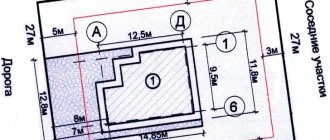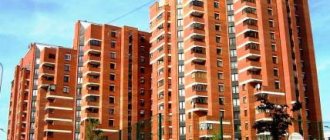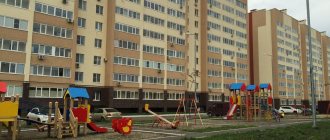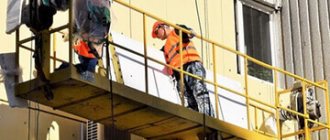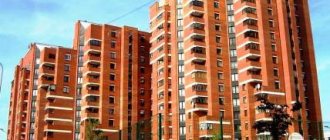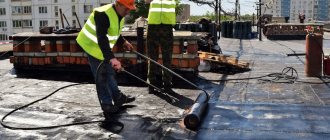What is a local area
In accordance with the Land Code of the Russian Federation, the category of local area includes areas adjacent to an apartment building and designed accordingly. Such territory is the property of all owners of apartments and commercial premises in the building. At the same time, it must meet the standards taking into account the placement of additional facilities and residents.
Residents can use this territory at their own discretion - install playgrounds, improve the area and erect fences. Owners often seek to establish a barrier for stray animals, passing vehicles and unauthorized persons.
It is allowed to place common property in the local area, which also needs protection. All actions with the local area are regulated by regulations:
- Land Code of the Russian Federation;
- Housing Code of the Russian Federation;
- Resolution of the Plenum of the Russian Federation No. 16;
- Resolution of the Arbitration Court of the Russian Federation No. 22.
It is established by law that residents of the house can make a decision at a general meeting on fencing the parking lot, playgrounds and other objects located in the common area.
When two pluses equal one minus
For greater clarity, here are the pros and cons of privatizing the land of an apartment building:
PROS
- The ability to use and dispose of local land only with the approval of the owners and residents of the house.
- Guaranteed compensation in the event of possible alienation of common land by municipal authorities.
- Possibility of commercial use: leasing (construction of a shopping center, car wash, garage complex, parking lot, etc.)
- An increase in the value of each individual apartment if the owners own shares of the adjacent land.
- The ability to create the most comfortable conditions for the life of the residents of the house.
MINUSES
- The need to pay a mandatory real estate tax duty (this duty is included in the receipt for utility bills).
- The need for landscaping, landscaping and maintenance of the local area at the expense of the residents of the house.
Types of fencing
All fences are divided not only by materials of manufacture, but also by types of access to the territory:
- Complete ban. They can use any fences, including metal and stone fences up to 2 meters high. Residents of some houses additionally hire a concierge and video surveillance with intercom.
- Partial ban. A barrier is installed, the installation of which requires a permit. Coordination with emergency services including police, fire and ambulance is also required.
- Partial to part of the territory. Such fences are targeted. In this case, permission is not required. Mesh fences up to 3 meters high are installed. They are used to fence garbage containers, parking lots and sports areas.
- Prohibition on direct access to specific objects. Such restrictions are often imposed by utilities and construction companies for protection during restoration or renovation work. These are usually temporary wooden fencing.
Residents have the right to install gates and gates equipped with intercoms and electronic locks. To open, either a code key or a special card can be used. A quick opening system is provided if specialized vehicles need to pass through.
Decoration of the local area
First you need to register ownership of the area in front of the house, if this has not been done previously. In new buildings, as a rule, the right to the plot is transferred along with the ownership of the apartment.
If the house was put into operation before 2005, it is necessary to carry out land surveying, determine the boundaries of the territory and register the site with the cadastral register. Then the documents are submitted to Rosreestr, where within a week the residents become shared owners of the land. To install the fence, you must prepare the following documents:
- Extract from the cadastre indicating the coordinates of turning points;
- Cadastral passport;
- The act of taking out turning points.
These documents are necessary so that when installing a fence you do not go beyond the designated area.
Privatization procedure
The procedure for privatization of the adjacent territory consists of several successive stages.
These include:
- General meeting of residents of the house.
- Obtaining everyone's consent.
- Selection of responsible persons.
- Preparation of cadastral documentation for the site.
- Determination of territory boundaries.
- Contact your local authority.
- Conclusion of a privatization agreement. In this case, everyone will be the owner of the territory on the basis of shared ownership.
- Registration of property rights in Rosreestr.
Each of the stages must be implemented sequentially, otherwise privatization of the territory will be impossible.
Contacting the municipality
If the land plot was allocated to the developer on a leasehold basis, then you will need to contact the local administration to obtain permission for privatization. The essence of the request will be to transfer the territory into shared ownership of the residents.
The legal representative must have a passport, a power of attorney, an extract from the decision of the general meeting of apartment owners, and a site plan.
A representative can contact the local administration in several ways. In this case, the law does not establish restrictions. That is, the representative can use any of the options used in practice.
Most often, interested parties contact the municipality on their own. To do this, you need to come to the local administration in person. In this case, the application can be completed on the spot. In this case, a person has the right to receive advice on all issues of interest. You can also make sure that the application is recorded and will be considered.
Postal delivery is also permitted by law. This option involves the use of registered mail with notification of delivery to the addressee. This method has a number of disadvantages. First of all, you will need to complete the application yourself. This may cause errors or inaccuracies, which may result in your request being denied. Also, during the transfer process, it will not be possible to immediately eliminate inaccuracies and obtain clarification on issues of interest.
You can also send documents via the Internet. This option is used in cases where the initiator is located quite far from the local administration. To implement this method, you must have e-mail at your disposal, as well as convert all data into digital format.
To save time and effort, you can contact the multifunctional center. This option is the simplest and optimal for any initiator. In this case, the service is provided free of charge. It will be necessary to submit only those documents that are on hand. The center’s specialists will assist in completing the application, request the necessary information, and also forward the data to its destination.
The interested person determines any of the options independently, depending on the characteristics of the current situation and his capabilities. After all the transmitted data has been studied in detail, a privatization agreement is concluded between the residents of the house and the local administration.
Cadastral registration
Cadastral registration is one of the mandatory stages of privatization of the local area. In this case, we are talking about the main characteristics of the land plot - area, boundaries, location. A special database contains information of this nature. Without it, it will be impossible to carry out any property transaction with a land plot, including privatization. To do this, interested parties must send the necessary information to the authorized official body.
Afterwards, under the terms of the concluded agreement, cadastral work will be carried out and a passport will be issued. At the end, the territory will be assigned a special number, which contains all the data about the site.
Registration in Rosreestr
The final stage of privatization of the local area is an application to the Rosreestr authorities. This is necessary to register ownership. In this case, the initiator will need to submit a written application. Although the use of ordinary office paper is permitted, upon visiting the registration authority the initiator will be given a printed form and given practical assistance in filling it out.
The text should indicate the following:
- Name and address of the registration authority.
- Information about the initiator or his representative - last name, first name, patronymic, passport and power of attorney details, place of residence, telephone number for contacts.
- Information about the privatized territory - location address, total area, boundaries.
- Grounds for appeal. In this case it will be a transfer of ownership.
- The application for registration of rights itself.
- List of attached documentation.
- Date of application and signature of the initiator.
The application must be accompanied by documents that will confirm the validity of the application. These include a passport, a power of attorney from a legal representative, a cadastral passport of a plot, a privatization agreement, a receipt for payment of the state duty. The payment amount will be two hundred rubles for each participant in the property. You can contact Rosreestr in ways similar to applying to the municipal authority, that is, in person, through a legal representative, online, MFC or by mail. The registration period takes seven working days. If the information was sent through the multifunctional center, then the rights will be recorded within nine working days. After this, each participant will receive a certificate. Such documents can be issued by hand against signature or through a multifunctional center.
Features of coordination
If you want to fence the territory of an apartment building, permission from neighbors is required, since the site is jointly owned. After this, coordination is carried out with government services, since it is important to ensure access for fire trucks, ambulances and police officers.
First of all, a meeting of owners of residential and non-residential premises is appointed. If the support of a quorum of those gathered is received, then it will be necessary to develop a project. It is submitted to the following services for approval:
- Architectural Department;
- Regional Department for Emergency Situations;
- Ambulance station;
- Police Department.
If written permission is not obtained, the fence may be demolished by court order.
When the approval procedure is completed in full, residents need to choose a contractor. Money is collected directly from the owners or debited from the house account for repairs and improvement of the apartment building. When installing the fence, all safety requirements are taken into account.
It should not interfere with access to communications such as wires and pipes. It is better not to install the fence over underground pipes, otherwise it may be dismantled in the event of an accident. But this is not a mandatory requirement if the owners are ready to restore the structure at their own expense. The height of the fence should not exceed 2 meters. In case of installation of targeted metal mesh, the height can be up to 3 meters. They are used for fencing sports and children's playgrounds.
Possible difficulties
Difficulties may appear already at the stage of collecting payment for construction.
Those who voted against can refuse payments. There are always citizens who are in favor of installation, but do not plan to participate financially. According to the law, no one can force payment. Even if someone does not pay, they must be given the keys to the gate. According to Art. 209 of the Civil Code of the Russian Federation, the owner has the right to freely use, own and dispose of his own property. Owners of non-residential premises on the ground floor of the house, where beauty salons, bank branches and shops are located, may oppose the installation of a fence. Installing fencing will significantly reduce the number of visitors. Such an owner can defend his interests in court. But in this case, you can install the fence in such a way as to leave access to the commercial premises.
How to deal with illegal fencing?
Unauthorized installation of fences is not permitted. First of all, the legality of the construction is determined. It is necessary to request documents confirming the inclusion of the territory in the cadastral development plan. Additionally, the minutes of the residents' meeting on the arrangement of the fence are provided.
All owners have the same rights to use the territory. This decision should be supported not just by a majority of the owners present, but by a majority of those constituting a quorum or 2/3 of the votes. A decision can only be made if this condition is met.
If documents are missing, one of the following decisions is made:
- Design of fencing in accordance with the interests of residents. To do this, a meeting is held, which is attended by the majority of residents.
- Elimination of illegal construction. This solution is possible if the majority of owners are against it.
To demolish an illegal building, it is necessary to submit a collective application to the Administration. It indicates the address, cadastral number of the plot, confirmation in photographs, and a request to demolish the building. Within a month from the date of registration of the application, the illegal construction is liquidated.
Thus, apartment owners have the right to fence off the adjacent area. To do this, it is important to go through all stages of approval and provide access to all residents.
Rights and responsibilities of owners
Responsibility for the privatized plot of the adjacent territory of the apartment building falls on the shoulders of the newly minted owners, who are obliged to ensure:
- landscaping of the area adjacent to the house;
- removal of garbage, fallen leaves and snow removal, including from the roofs of buildings and structures located on the site;
- dismantling of objects that threaten the lives of citizens located on the site;
- lighting of the local area, public gardens, entrance to the yard, etc.;
- timely repair of all structures and road surfaces.
Additional information
Owners of the local area do not always have the opportunity to carry out all the listed works themselves, therefore they delegate their powers to management companies or HOAs that maintain the proper condition of the site for a fee.

